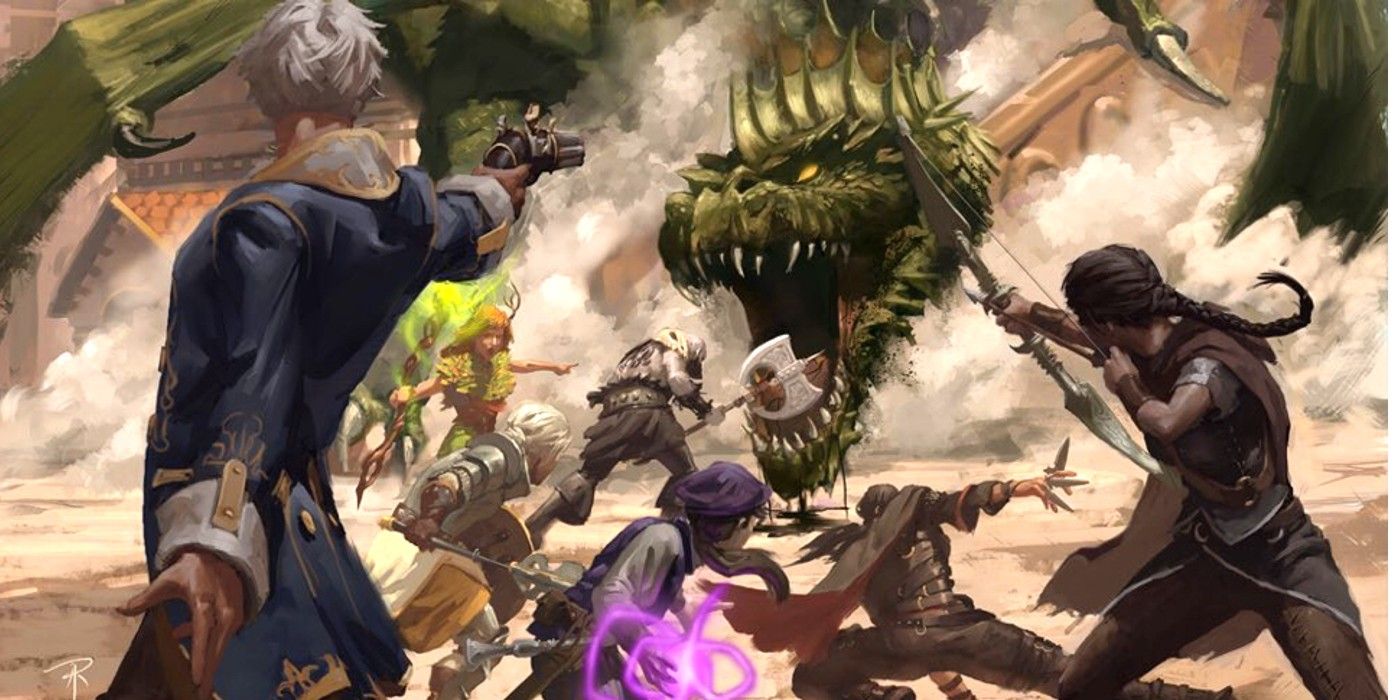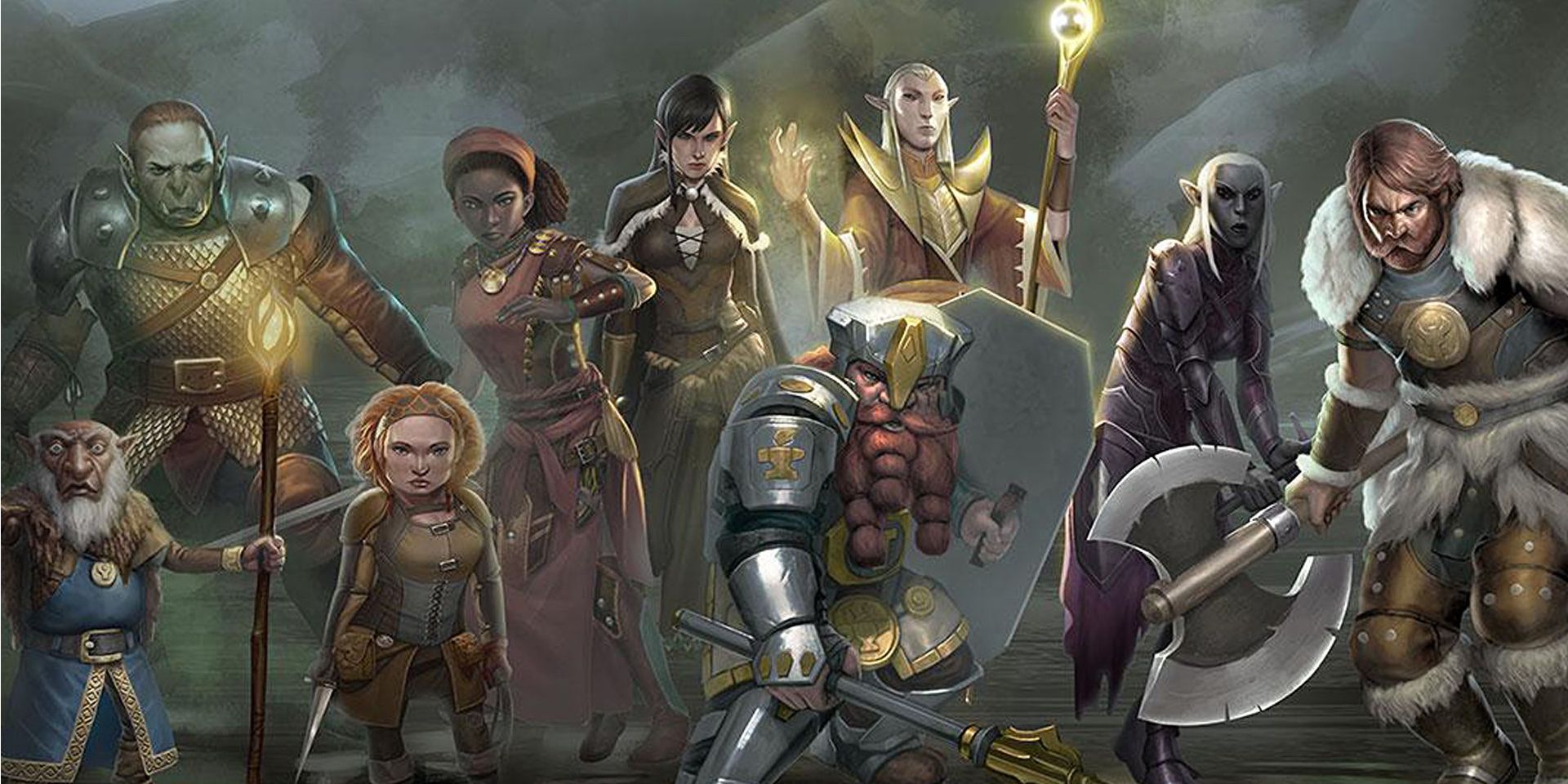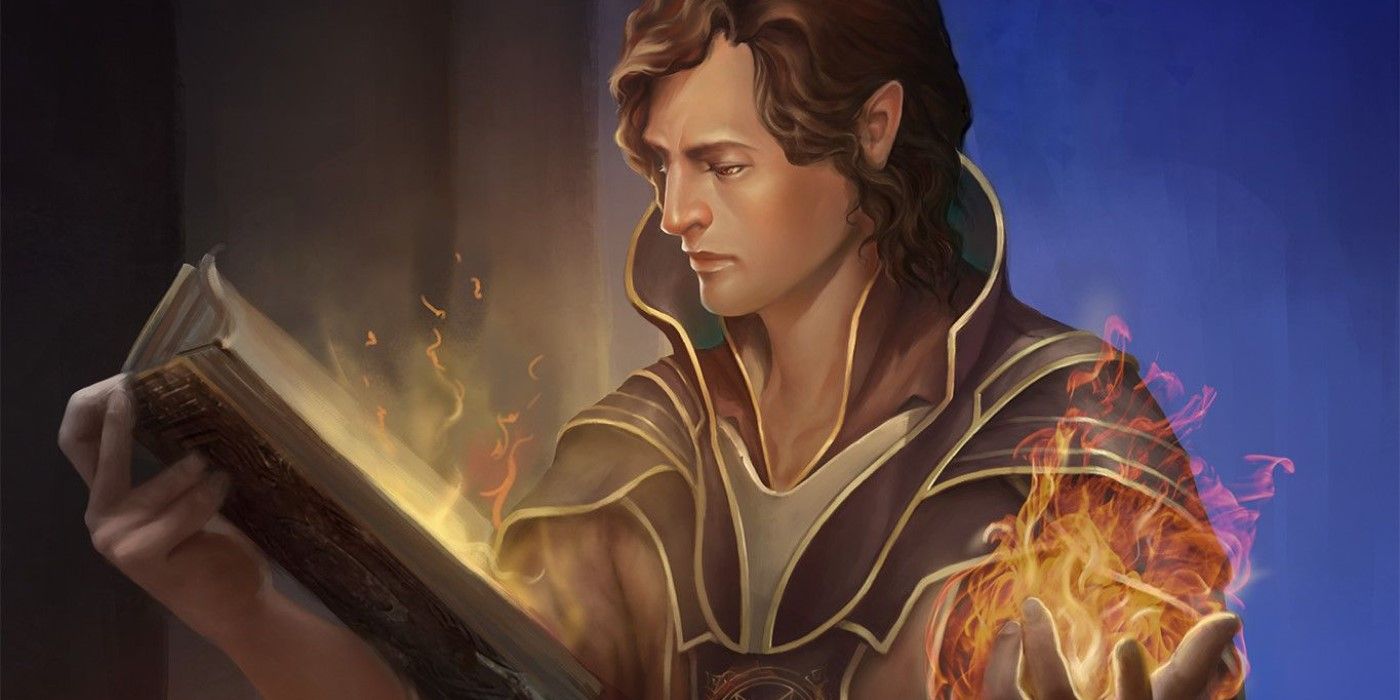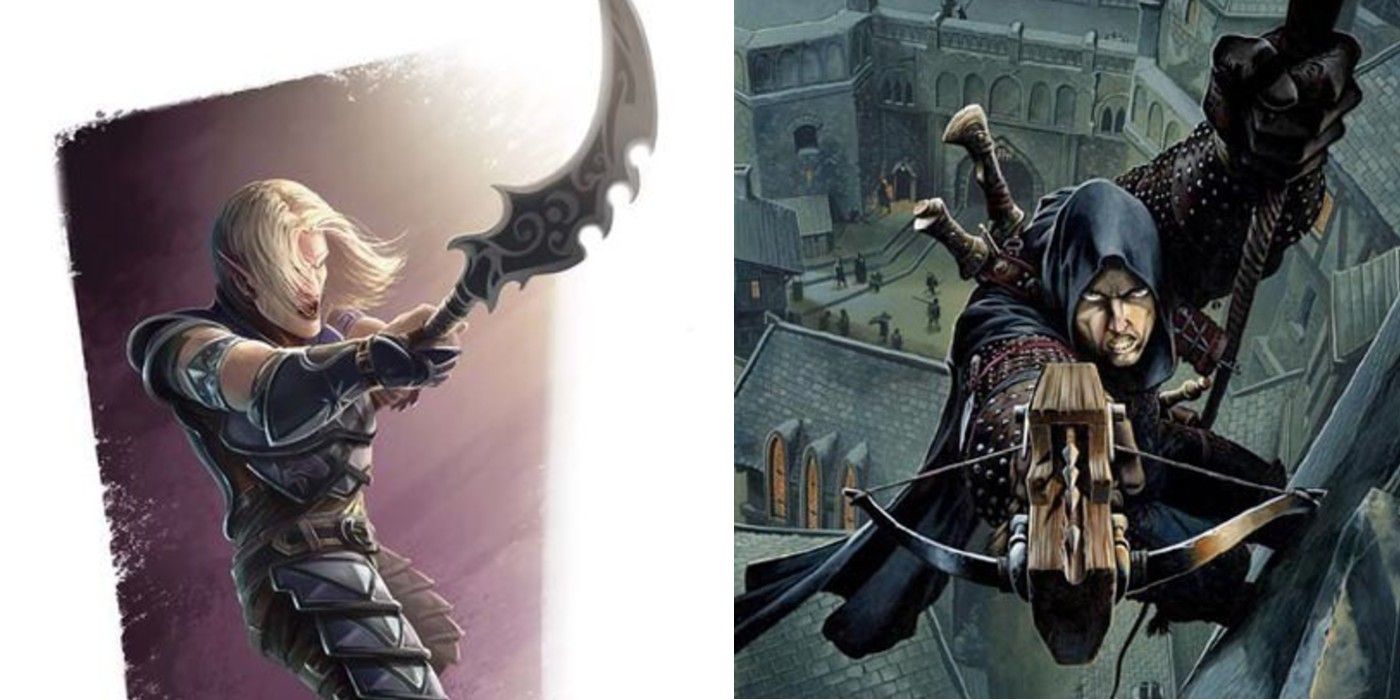The current 5e Dungeons & Dragons rules prioritize simplicity and ease of understanding, but multiclassing is still included in the core Player’s Handbook, albeit as an optional rule, alongside feats. The game describes multiclassing as a tradeoff, noting “you’ll sacrifice some focus in exchange for versatility.” This is an accurate description of multiclassing, even more so than third edition D&D where multiclassing was popularized, as increases to ability scores or feat selections are now tied to class levels, not overall character level.
Characters also require exceptional stats in order to multiclass, a prerequisite that recalls systems used in Advanced Dungeons & Dragons. Multiclassing requires high stats in the prime requisites of both the class a character is leaving as well as the class they are going to, a rule many players overlook. Multiclassing requires careful planning, which begins at the time of character creation, but with the right combinations, a multi-classed character can be more versatile, and sometimes more powerful, than their single-classed counterparts.
Players intending to multiclass in D&D should read up on the multiclassing rules prior to creating their character. A 13 or higher in one or more attributes is required to multiclass. Some combinations involve only one stat, such as a Sorcerer/Warlock multiclass, which both require a 13 Charisma. Classes like Paladin require both a Strength and Charisma of 13, and the Fighter is the only core class to provide either Strength or Dexterity as eligible prerequisite stats. When using Point Buy to generate characters, a 13 is easily obtainable for only 5 out of the 27 total points afforded.
Unique D&D Features Like Channel Divinity Have Special Multiclassing Rules
Those planning certain complex or unconventional D&D class combinations could still find their point total taxed, as a Paladin/Ranger requires a 13 in Strength, Charisma, Dexterity, and Wisdom, a total of 20 points. Racial modifiers to stats, notably, do count towards multiclassing prerequisites, as do ability score increases available at class level 4, and beyond. Magical items that replace a base stat, such as a Belt of Giant strength, do not meet multiclassing requirements, however, as they are based on a character’s innate stats, not their magically imbued replacements.
A character’s proficiency bonus, which scales from +2 at level 2, to +6 at level 16 and beyond, is tied to character level, not class level, enabling multiclass characters to advance appropriately. Every class other than Sorcerer and Wizard provides some D&D proficiencies when multiclassing, often including weapons and armor, and sometimes skills, or an additional tool in the case of the Rogue. Notably, Heavy Armor proficiency cannot be obtained via multiclassing, even with classes like Fighter and Paladin, so characters intending to use Heavy Armor may wish to begin their career in one of those classes. There are workarounds, however, such as multiclassing into Cleric, which normally grants only Medium Armor proficiency from multiclassing, and selecting a Divine Domain like the War Cleric subclass that grants Heavy Armor proficiency as well as Martial Weapon proficiency.
The multiclassing rules include special guidelines for a few unique class features, like a D&D Cleric and Paladin's Channel Divinity spell. Multiclassing between two classes with Channel Divinity features provides alternate uses for Channel Divinity, but the number of times it can be used it based on the largest number afforded by any single class, not the combined number. The Extra Attack feature works similarly. Most martial classes receive a single Extra Attack as part of the Attack Action at level 5. Only the highest number of Extra Attacks is actually added, they are not cumulative, so a Monk 5/Fighter 5 receives only one extra attack, but a Fighter 11, Monk 5, would have two extra attacks thanks to the Fighter’s Level 11 improvement to the feature.
Multiclassed D&D Spellcasters Are Among The Most Complicated Characters
The rule for Unarmored Defense, a feature for D&D Barbarians and Monks, is often overlooked by multiclassing players. This rule notes, “If you have the Unarmored Defense feature, you cannot gain it again from another class.” This means players cannot pick their preference between the Barbarian’s Constitution-based Unarmored Defense and the Monk’s Wisdom based version, in a Barbarian/Monk multiclass. Rather, they gain access only to the first one they obtained, making the order a player selects for earning their class levels crucial.
The spellcasting rules for multiclassed D&D characters are by far the most complicated part, and players intending to focus on spells as their primary contribution to the group may want to avoid excessive multiclassing, accordingly. The spells known and prepared are based solely on each class individually, but spell slots can increase based on combined classes. Full spellcaster classes like Sorcerer, Cleric and Druid provide full progression, “half casters” like Paladin and Ranger provide one half level’s progression, rounded down, while specific subclasses like the Eldritch Knight Fighter and Spellthief Rogue allow these martially-oriented classes to contribute one-third level’s progression, also rounded down.
Some combinations allow for a scenario where a D&D character has higher level spell slots than the spells they know from any class, but lower-level spells can be cast using higher level spell slots, often with improved benefits. Players should be aware that any DCs associated with spells are tied to the key stat of the class the spell originates from. A Cleric 10/Wizard 10, for example would end up with a full caster spell slot progression, identical to a single-classed full caster. They would only “know” spells up to 5th level from either class, however, so any higher-level spell slots would have to be used for “upcast” spells, and their Cleric spell attack rolls and DCs would be based on Wisdom, where Wizard spells would key off of Intelligence.
Well-Planned D&D Multiclassing Yields Outstanding Results For Savvy Players
Despite the challenges of multiclassing, savvy players can benefit from strategic use of the system. Starting with a single D&D Rogue level offers several skill proficiencies, proficiency in thieves’ tools, and two choices for Expertise, where the proficiency bonus is doubled. This can be beneficial for any character, allowing them to function as the group’s trap disabler, and aiding their ability to contribute outside of combat. Starting with a Fighter level before multiclassing into a spellcasting class like Wizard provides useful armor proficiencies, as well as proficiency in Constitution-based saving throws, which are vital for a spellcaster’s Concentration checks.
A skill mastery-focused D&D character with 11 Rogue levels with the Scout subclass, 1 Cleric level with the Knowledge Domain, 3 Bard levels with the College of Lore subclass, and 5 Ranger levels with the Fey Wanderer subclass, gains 10 Expertise skills and proficiency with nearly every skill in the game. A properly built Rogue/Fighter multiclass character specializing in the hand crossbow is a more devastating damage dealer than a single-classed Rogue, with more out of combat versatility than a pure Fighter. A Barbarian 8/Fighter 12 focused on D&D's polearms offers more melee damage than a single-classed Barbarian, without the vulnerability of a Fighter who lacks the Rage class feature. These builds require careful planning and may not be appropriate for players who are just learning the system, but experienced players will find that multiclassing makes 5e Dungeons & Dragons much more exciting and tactically rich than it might first appear.




